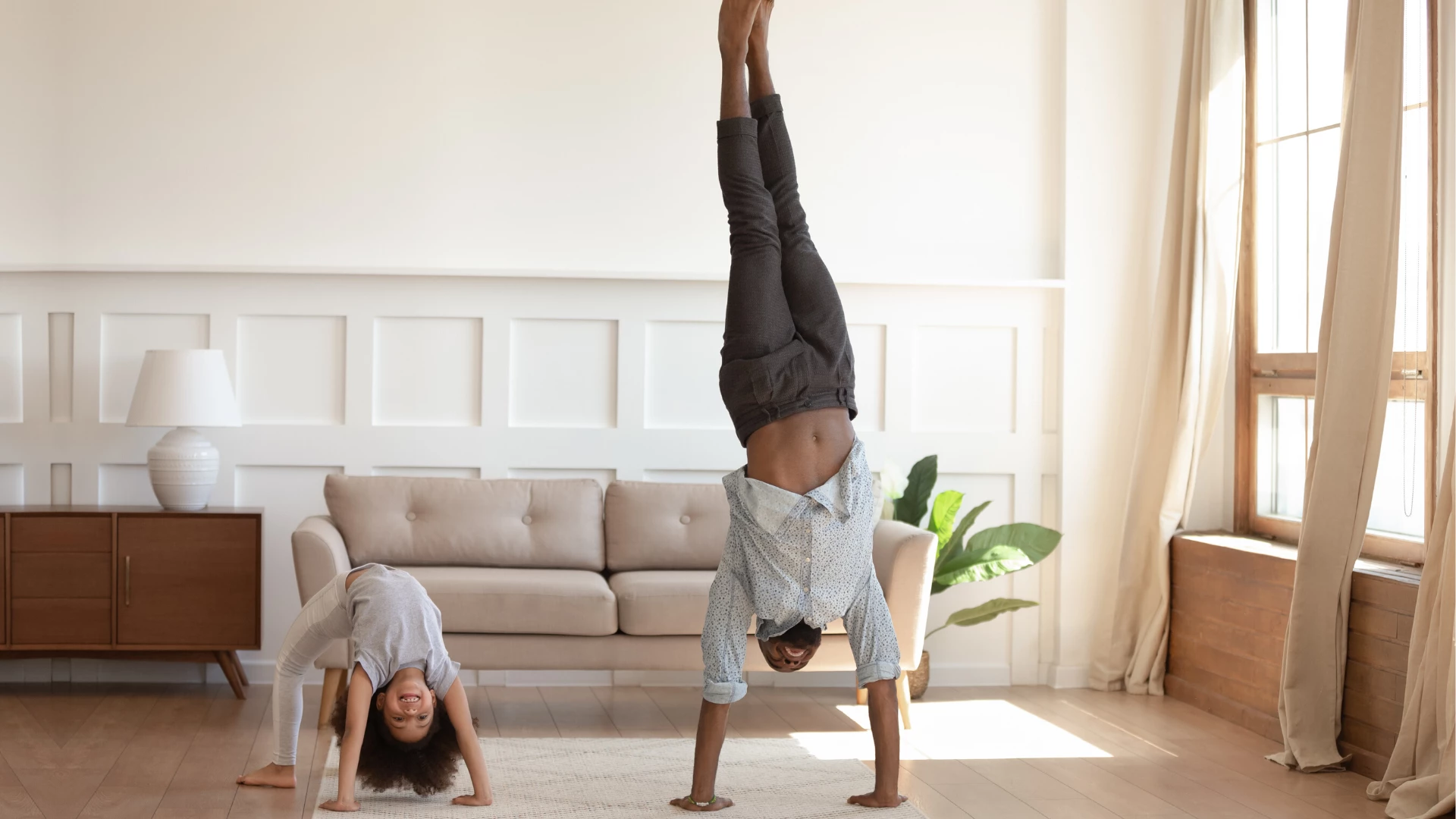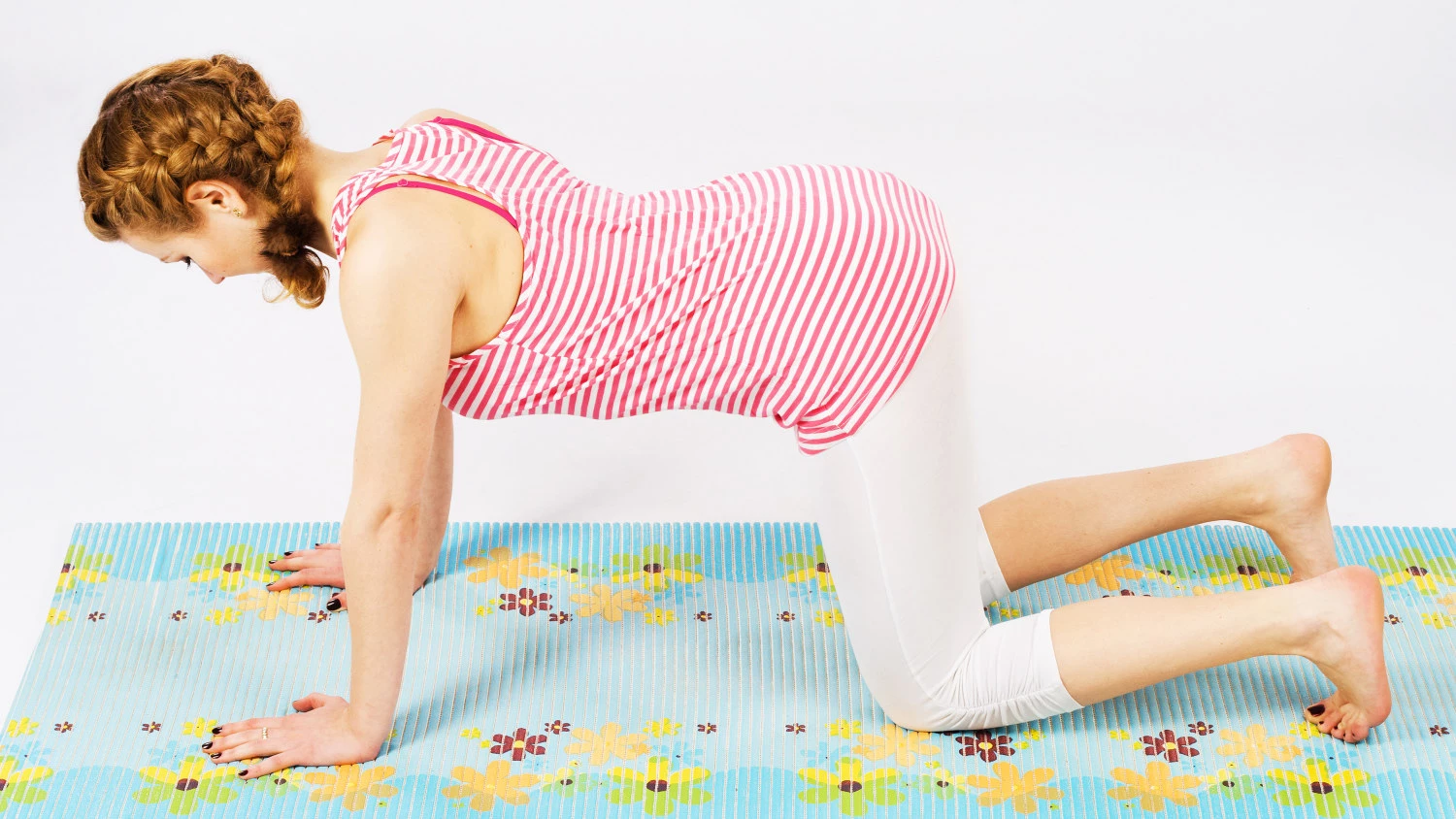Yoga Games for Families

Many people believe, and for very good reasons, that the family is the foundation of society. In an ever-changing world, however, factors including high divorce rates and technology-driven shifts in communication can threaten that important cornerstone.
In “The most important thing you can do with your kids? Eat dinner with them.” (Jan. 12, 2015), The Washington Post writer Anne Fishel shares concrete evidence that families who eat together often are healthier, happier and more connected. The children of those families more easily weather the storms of childhood and later youth, and also succeed more in school and early work endeavors.
The Benefits of Practicing Yoga as a Family
I venture to argue that yoga, an ancient lifestyle for attaining greater holistic wellness, can have similar benefits for families if they practice it together. Yoga is in many ways a personal journey of reaching closer to that overall wellness. There are  many possibilities for growing in community within it, however.
many possibilities for growing in community within it, however.
When we can come to greater peace in ourselves, we can understand and reach out to others more easily and successfully. In addition, practicing with older siblings and parents can be an avenue for more successfully engaging little ones in yoga.
Otherwise, it’s a practice that can sometimes be difficult for them to grasp. True, there are many very well-crafted early childhood yoga programs, those that most often engage toddlers and preschoolers well. However, not all children have access to those programs. Still other children cope with behavioral and emotional challenges that make it difficult for them to engage with their peers in groups.
Tips for Teaching Yoga to All Ages
I’ve had the pleasure of leading a local family in yoga practice for about eight months. It’s been challenging, in some ways, to teach in a way that is appropriate for the parents and at the same time engaging for the children (who are aged 6, 8, and 9 years). I’ve grown in my skills of doing so, however. For example, I do animal sounds with postures such as Cat/Cow and Cobra, just like I do when I teach classes of all children.
 I balance those more child-centered methods with slightly more sophisticated cueing (such as keying into the feelings in separate body parts), which offers the parents something more stimulating. It also offers a healthy challenge for the children. Balance can be difficult to create, but I’ve seen that it’s certainly possible. Just think of Pixar films such as Wall-E, those that manage to be age appropriate for children as well as enjoyable for older siblings and parents. In my YogaUOnline article “4 Images to Enliven Your Classes” I share some posture images that can be helpful and relatable to anyone!
I balance those more child-centered methods with slightly more sophisticated cueing (such as keying into the feelings in separate body parts), which offers the parents something more stimulating. It also offers a healthy challenge for the children. Balance can be difficult to create, but I’ve seen that it’s certainly possible. Just think of Pixar films such as Wall-E, those that manage to be age appropriate for children as well as enjoyable for older siblings and parents. In my YogaUOnline article “4 Images to Enliven Your Classes” I share some posture images that can be helpful and relatable to anyone!
I’ve also seen that balancing structure and spontaneity is another wise approach for family-based yoga. Structure helps children to self-regulate their behaviors, gives parents and instructors tools for keeping things in control, and helps to keep everyone learning. Space for improvisation helps keep everyone feeling light, happy, and interested in continuing to practice. Here are a few asana “games” that families can play together. They are concrete structures, yet leave much room for improvisation and creativity.
Asana Games for Family Yoga
Down-Dog “Tunnel”– All participants take Downward-Facing Dog in one straight line, so there appears a “tunnel” of the triangles their bodies create in the posture. This works best in a long room, because it moves sideways over the course of the game. A person from one end crawls through the tunnel to take Down-Dog again next to the person on the other end. The family can decide on a way to let the next person at the beginning of the tunnel know that they are at the other end.
To add continued learning about yoga, as well as add some room for creativity, here’s one option for that: When someone comes to the end of the tunnel, he or she could practice his/her favorite posture and say its name. Families can establish this at the outset of the game, so that everyone knows that this is the signal for the next person to crawl through the tunnel. With older children, participants can choose a favorite mantra or chant “Om” (which might not be accessible to younger ones).
 Yoga Animals “Zoo”– This game calls upon the many asanas that are modeled after animals. All participants can take their place in such a posture, then move as that animal would to another spot in the room. Then they can choose another, and that continues. The game can keep going as long as everyone’s ideas are fresh.
Yoga Animals “Zoo”– This game calls upon the many asanas that are modeled after animals. All participants can take their place in such a posture, then move as that animal would to another spot in the room. Then they can choose another, and that continues. The game can keep going as long as everyone’s ideas are fresh.
Just as with the last game, this offers opportunities for participants to test—and through that likely strengthen—their knowledge of various poses. For younger children, these “animals” most likely include Cat/Cow, Lion, Cobra, and Locust. For older siblings and parents who might be more advanced practitioners, these asanas could expand into ones such as Pigeon, Heron, and Eagle.
Yoga “Freeze Dance”– This game is a variation on the theme of “Freeze Dance,” a movement game that, in my experience, young children (and adults!) absolutely love. It offers much opportunity for all involved to get their heart rates up and feel energetic through free movement (and little ones often have much energy to release!). In this yoga asana version, it can also be fun way to practice various postures.
Pick a few songs (age-appropriate for all, of course) that are upbeat and feel good to dance to. Everyone can free dance, until one designated person stops the music. That cues everyone to practice a favorite posture. An option is to keep going until people start repeating postures, making them “out” (as is done with the traditional “Freeze-Dance” game). Or, if a family prefers to keep everyone engaged the whole time (certainly my preference), it can just keep going as long as the group has time to continue.
Whether with these games, or with a more traditional yoga class approach, I’ve seen that family share beautiful moments, both during and after practice. Those include spontaneous hugs, laughter, and genuine praise for commendable achievements. I daresay that those moments must have very beneficial resonating effects.
Another great article about yoga for children: Yoga in School Improves Health According to New Research Review.
 Also be sure to check out our online course on teaching yoga for kids with Global Family Yoga’s Mira Binzen:
Also be sure to check out our online course on teaching yoga for kids with Global Family Yoga’s Mira Binzen:
Yoga for Stable and Calm Kids – Creating Greater Balance and Integration.
Kathryn Boland is a RCYT and R-DMT (Registered Dance/Movement Therapist). She is originally from Rhode Island, attended The George Washington University (Washington, DC) for an undergraduate degree in Dance (where she first encountered yoga), and Lesley University for an MA in Clinical Mental Health Counseling, Expressive Therapies: Dance/Movement Therapy. She has taught yoga to diverse populations in varied locations. As a dancer, she has always loved to keep moving and flowing in practicing more active Vinyasa-style forms. Her interests have recently evolved to include Yin and therapeutic yoga, and aligning those forms with Laban Movement Analysis to serve the needs of various groups (such as Alzheimer’s Disease patients, children diagnosed with ADHD, PTSD-afflicted veterans – all of which are demographically expanding). She believes in finding the opportunity within every adversity, and doing all that she can to help others live with a bit more breath and flow!



